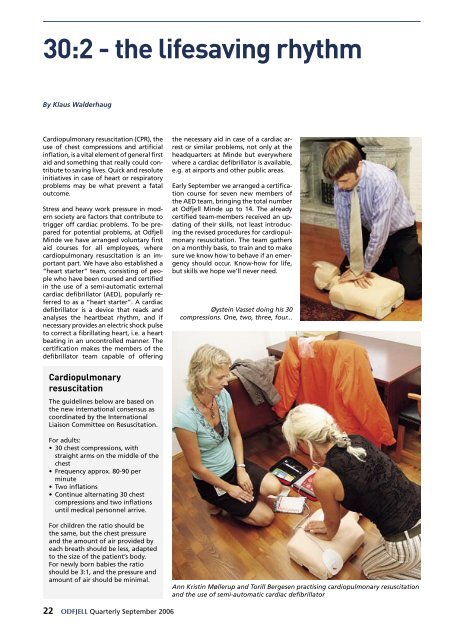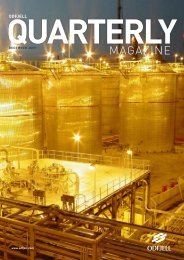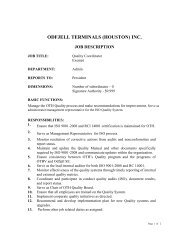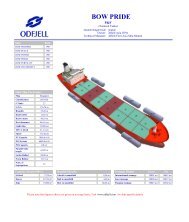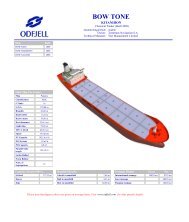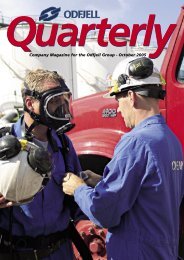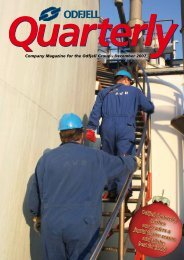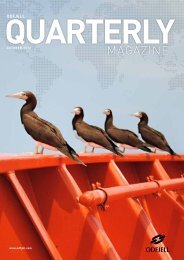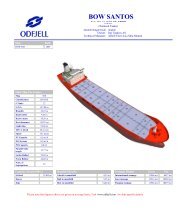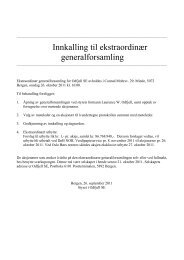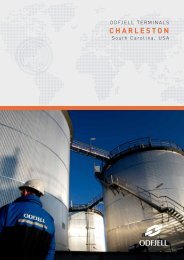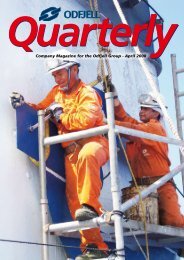You also want an ePaper? Increase the reach of your titles
YUMPU automatically turns print PDFs into web optimized ePapers that Google loves.
30:2 - the lifesaving rhythm<br />
By Klaus Walderhaug<br />
Cardiopulmonary resuscitation (CPR), the<br />
use of chest compressions and artificial<br />
inflation, is a vital element of general first<br />
aid and something that really could contribute<br />
to saving lives. Quick and resolute<br />
initiatives in case of heart or respiratory<br />
problems may be what prevent a fatal<br />
outcome.<br />
Stress and heavy work pressure in modern<br />
society are factors that contribute to<br />
trigger off cardiac problems. To be prepared<br />
for potential problems, at <strong>Odfjell</strong><br />
Minde we have arranged voluntary first<br />
aid courses for all employees, where<br />
cardiopulmonary resuscitation is an important<br />
part. We have also established a<br />
“heart starter” team, consisting of people<br />
who have been coursed and certified<br />
in the use of a semi-automatic external<br />
cardiac defibrillator (AED), popularly referred<br />
to as a “heart starter”. A cardiac<br />
defibrillator is a device that reads and<br />
analyses the heartbeat rhythm, and if<br />
necessary provides an electric shock pulse<br />
to correct a fibrillating heart, i.e. a heart<br />
beating in an uncontrolled manner. The<br />
certification makes the members of the<br />
defibrillator team capable of offering<br />
the necessary aid in case of a cardiac arrest<br />
or similar problems, not only at the<br />
headquarters at Minde but everywhere<br />
where a cardiac defibrillator is available,<br />
e.g. at airports and other public areas.<br />
Early September we arranged a certification<br />
course for seven new members of<br />
the AED team, bringing the total number<br />
at <strong>Odfjell</strong> Minde up to 14. The already<br />
certified team-members received an updating<br />
of their skills, not least introducing<br />
the revised procedures for cardiopulmonary<br />
resuscitation. The team gathers<br />
on a monthly basis, to train and to make<br />
sure we know how to behave if an emergency<br />
should occur. Know-how for life,<br />
but skills we hope we’ll never need.<br />
Øystein Vasset doing his 30<br />
compressions. One, two, three, four...<br />
Cardiopulmonary<br />
resuscitation<br />
The guidelines below are based on<br />
the new international consensus as<br />
coordinated by the International<br />
Liaison Committee on Resuscitation.<br />
For adults:<br />
• 30 chest compressions, with<br />
straight arms on the middle of the<br />
chest<br />
• Frequency approx. 80-90 per<br />
minute<br />
• Two inflations<br />
• Continue alternating 30 chest<br />
compressions and two inflations<br />
until medical personnel arrive.<br />
For children the ratio should be<br />
the same, but the chest pressure<br />
and the amount of air provided by<br />
each breath should be less, adapted<br />
to the size of the patient’s body.<br />
For newly born babies the ratio<br />
should be 3:1, and the pressure and<br />
amount of air should be minimal.<br />
Ann Kristin Møllerup and Torill Bergesen practising cardiopulmonary resuscitation<br />
and the use of semi-automatic cardiac defibrillator<br />
22 ODFJELL Quarterly September 2006


